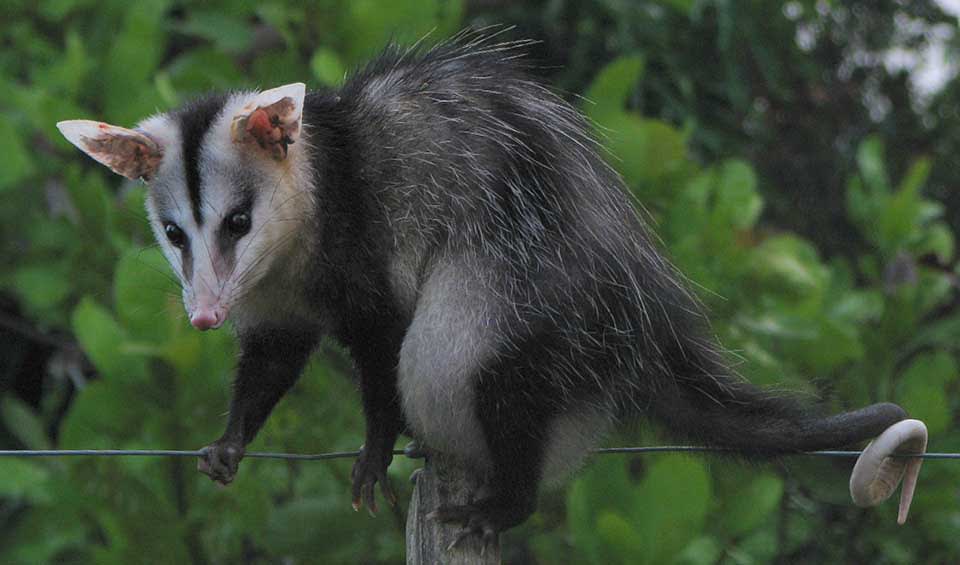A smart, adaptable marsupial found across much of South America, including Brazil, Argentina, Paraguay, Bolivia, and Uruguay. This animal gets its name from the distinct white patches on its ears, which contrast sharply with its mostly grayish-black fur and help distinguish it from other opossums. With its pointed face, round ears, long whiskers, and a hairless prehensile tail, the white-eared opossum may not win any beauty contests — but it’s a true master of adaptation.
Like other opossums, it is nocturnal and solitary, foraging mainly at night for a wide variety of foods. It’s an omnivore, eating everything from fruits and insects to small animals, bird eggs, and even carrion. This wide diet allows it to survive in changing environments, including farms, forests, and cities. Its strong nose helps it sniff out meals in the dark, while its agile climbing skills and grasping tail make it an excellent tree climber. During the day, it hides in nests made in hollow trees, brush piles, or abandoned buildings.
The white-eared opossum can play dead — a defense trick known as “playing possum.” When seriously threatened, it may go stiff, lie on its side, stick out its tongue, and release a foul smell to convince predators it’s not worth eating. Another cool detail: although it looks a bit rat-like, it’s actually more closely related to kangaroos than to rodents. Its long, bare tail is not only great for balance but can also carry nesting materials, making it an extra limb of sorts.
Distribution
 Argentina
Argentina Bolivia
Bolivia Brazil
Brazil Paraguay
Paraguay Uruguay
UruguayAnything we've missed?
Help us improve this page by suggesting edits. Glory never dies!
Suggest an editGet to know me
Terrestrial / Aquatic
Altricial / Precocial
Polygamous / Monogamous
Dimorphic (size) / Monomorphic
Active: Diurnal / Nocturnal
Social behavior: Solitary / Pack / Herd
Diet: Carnivore / Herbivore / Omnivore / Piscivorous / Insectivore
Migratory: Yes / No
Domesticated: Yes / No
Dangerous: Yes / No




